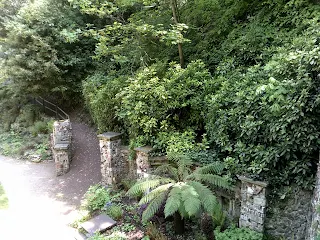THE
JEWELLER'S WIFE
BY
JUDITH LENNOX
THE
BLURB:-
1938. As England
awaits the outbreak of war, Juliet Winterton journeys from the
Mediterranean to the Essex countryside to begin her life as the
beautiful young wife of a London jeweller.
But beneath her
husband's intelligence and ambition, lies a cruel and ruthless man.
And when dashing politician Gillis Sinclair comes to stay at Marsh
Court, Juliet is drawn to his irresistible charm.
So begins a passionate
affair that will have consequences far beyond anything Juliet
imagines. For Gillis Sinclair is hiding a dark secret and, as the
Winterton children grow up, Juliet fears that they, too, will be
tainted by the past...
THE
REALITY:-
I've read all of Judith
Lennox's novels, apart from the first four- and that's only because
they're almost impossible to get hold of in anything other than
electronic form, and I don't own an e-reader. The only book I really
struggled with was All My Sisters: I looked forward to its release,
but then put it down almost immediately as there were so many
characters introduced during the first few pages that the storyline got
confusing and difficult to focus on. I didn't pick it up again until
5 years later. It turned out to be a good read and I got into Ms.
Lennox's novels once again.
This book, for me,
started off similarly uninspiring, and it wasn't until I was well
past the first 100 pages that I started to feel bored no longer. I
thoroughly enjoyed reading about the younger generation and their
time in “Swinging Sixties” London but there were so many of these
characters that this book, too, became confusing. Even though I raced to the
end (which I'm glad was happy, especially for Juliet, who deserved
it) I re-read the novel and gave it more of a chance. I'm glad I did
as I felt I rushed it the first time. I also found the family tree,
at the beginning of the book helped with pinpointing who's who (duh!)
In the middle of the
first read, I went to Southend for the day and, coincidentally,
looked at a map of the Essex area whilst I visited their RNLI
station. I pinpointed West Mersea, Maldon and the islands of the
Blackwater estuary, where this book is set, and was glad to do so, as
it got the geography of the area straight in my head. Like Freya, in
the novel, I too could easily become obsessed with causeways- such
strange places between land and sea. I'm glad that train stations
close to my home were mentioned- Ilford, Manor Park, Stratford, etc.
as it made me feel “in” the story!
It was quite obvious
that Freya was the long-lost daughter, and also very apparent that
she was alive. This author has used the notion of a person considered
drowned when they're really alive before. I suppose that, if you've
written as many meaty novels as Judith Lennox has, then the same
ideas will flow through more than once. With very good characters
and a (mostly) pulsing storyline this made for a compulsive read
which was emotional in parts. I loved our flawed heroine, Juliet.
When she put up with Henry's treatment of her you wanted to shake
her; when she treated Joe so nastily you wanted to shake her more!
This story managed to arouse some emotion in me, and it was also nice
to be taken to places outside of London (Essex and the Orkney's) with
clever descriptives. My favourite parts were always about the
causeway, the mysterious cottage and Frances and her twin children.
A good read- just don't
rush it, and study the family tree!









































